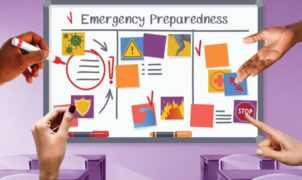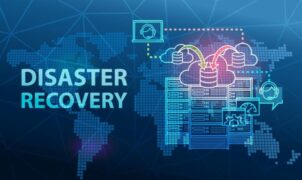
Water damage caused by leaks within homes can result in significant structural and financial losses. However, implementing preventive measures and adopting a proactive approach to leak detection can mitigate potential damage. This guide focuses on strategies and techniques to safeguard your home by detecting and preventing leaks before they cause extensive harm.
1- Understanding the Risks of Water Leaks in Homes
Recognizing Potential Leak Sources
Water leaks within homes can originate from various sources, some of which might not be immediately visible or accessible. Recognizing these potential sources is crucial for proactive leak detection and prevention:
- Plumbing Fixtures and Appliances:
- Faucets, showers, toilets, and other fixtures are common sources of leaks due to worn-out seals, loose connections, or internal malfunctions.
- Appliances like dishwashers, washing machines, and refrigerators with water lines can develop leaks in hoses, valves, or internal components.
- Pipes Behind Walls and Ceilings:
- Hidden pipes within walls, ceilings, or under floors are susceptible to leaks caused by corrosion, pressure changes, or structural issues.
- Aging or deteriorating pipes can weaken over time, leading to pinhole leaks or cracks that may go unnoticed for extended periods.
- Foundation and Structural Elements:
- Cracks in the foundation, compromised building materials, or inadequate waterproofing can result in water intrusion, causing leaks in basements or crawl spaces.
- Poorly sealed windows, doors, or roofing can allow water ingress during rainstorms or inclement weather.
Impact of Water Damage
Understanding the potential consequences of water damage caused by leaks is essential in realizing the urgency of preventive measures:
- Mold and Mildew Growth:
- Excess moisture from leaks creates an ideal environment for mold and mildew growth, posing health risks and requiring costly remediation.
- Mold infestations can affect indoor air quality and trigger respiratory issues, especially for individuals with allergies or respiratory conditions.
- Structural Deterioration:
- Prolonged exposure to water can weaken structural elements such as wood framing, drywall, or support beams, leading to rot, decay, and compromised stability.
- Weakening of structural integrity may result in costly repairs or, in severe cases, pose safety hazards to occupants.
- Electrical Hazards and Damage:
- Water leaks near electrical outlets, wiring, or appliances can lead to electrical shorts, equipment malfunctions, or electrical fires, posing serious safety risks.
- Corrosion or water damage to electrical components can necessitate extensive repairs or replacements.
- Property Damage and Loss:
- Water damage can ruin personal belongings, furniture, flooring, and other valuables, leading to financial losses and emotional distress.
- Structural water damage may depreciate property value and pose challenges during property sales or insurance claims.
Proactive Measures and Risk Mitigation
- Routine Inspections and Maintenance:
- Conduct regular checks of plumbing fixtures, appliances, and visible pipes for signs of moisture, corrosion, or unusual stains.
- Schedule professional maintenance to inspect and repair potential leak sources, ensuring their proper functioning and integrity.
- Early Detection Technologies:
- Implement smart leak detection systems or sensors that monitor water usage, detect abnormalities, and alert homeowners to potential leaks in real-time.
- Utilize moisture meters or thermal imaging devices to identify hidden moisture buildup indicative of leaks within walls or ceilings.
- Weatherproofing and Home Improvements:
- Seal gaps, repair cracks, and weatherproof vulnerable areas to prevent water infiltration during heavy rains, storms, or temperature fluctuations.
- Invest in durable, leak-resistant materials and upgraded plumbing fixtures that reduce the risk of leaks and enhance overall system longevity.
- Educational Initiatives and Awareness:
- Educate household members about leak detection signs, the importance of prompt reporting, and the need for proactive leak prevention measures.
- Foster a proactive mindset towards water conservation and responsible usage to minimize the potential for leaks.
Understanding the various risks associated with water leaks within homes is pivotal in realizing the importance of proactive leak detection and prevention strategies. By recognizing potential sources of leaks and comprehending the potential consequences of water damage, homeowners can take decisive steps to safeguard their homes and minimize the risks posed by water leaks.

2- Steps for Preventive Leak Detection
Regular Inspections:
- Scheduled Checks and Visual Assessments:
- Conduct regular visual inspections of visible plumbing fixtures, joints, and connections for any signs of leaks, corrosion, or moisture accumulation.
- Check for water stains, discoloration, or warping on walls, ceilings, or flooring near plumbing installations as potential indicators of hidden leaks.
- Utilizing Leak Detection Devices:
- Employ handheld moisture detectors or moisture meters to identify areas of excessive moisture, which may suggest the presence of hidden leaks behind walls or under floors.
- Consider using thermal imaging cameras that detect temperature variations or water leaks through changes in surface temperatures, aiding in locating concealed leaks.
Monitoring Water Usage:
- Smart Leak Detection Systems:
- Install smart leak detection systems or devices that monitor water flow and usage patterns. These systems can detect anomalies or unexpected spikes in water consumption, indicating potential leaks.
- Set up alerts or notifications through mobile applications or email to promptly address any unusual water usage detected by the monitoring systems.
- Regular Meter Readings:
- Periodically read and monitor water meters during periods of inactivity, such as overnight or when the house is unoccupied. Unexpected meter movement could indicate an undetected leak.
Maintenance and Repairs:
- Routine Plumbing Maintenance:
- Schedule professional plumbing inspections at regular intervals. Certified plumbers can perform comprehensive checks, identify potential issues, and conduct preventive maintenance.
- Replace deteriorating seals, washers, or connectors in plumbing fixtures to prevent leaks and ensure their proper functioning.
- Addressing Minor Leaks Immediately:
- Promptly repair dripping faucets, running toilets, or minor visible leaks as soon as they are noticed. Small leaks can escalate into significant issues if left unattended.
Upgrading Fixtures and Appliances:
- Leak-Resistant Fixtures:
- Consider upgrading to leak-resistant plumbing fixtures, such as fittings with high-quality seals or non-corrosive materials, reducing the likelihood of leaks.
- Appliances with Auto-Shutoff Features:
- Invest in appliances equipped with automatic shut-off valves or leak detection mechanisms. These features can prevent water flow in case of malfunctions or leaks, minimizing potential damage.
Insulation and Weatherproofing:
- Protecting Pipes from Temperature Extremes:
- Insulate exposed pipes in colder climates or unheated areas to prevent freezing and subsequent pipe bursts during winter.
- Use pipe insulation sleeves or heat tape to maintain proper temperatures and protect against freeze-related leaks.
- Sealing and Weatherproofing:
- Ensure proper sealing around windows, doors, vents, and roof penetrations to prevent water intrusion during heavy rains or storms.
- Regularly inspect and maintain exterior seals and caulking to prevent water seepage into the home’s interior.
Education and Awareness:
- Household Education on Leak Prevention:
- Educate household members about leak detection signs, the importance of reporting leaks promptly, and the significance of water conservation practices.
- Encourage responsible water usage habits and emphasize the collective effort needed to prevent leaks and conserve water resources.
Implementing a proactive approach to preventive leak detection involves a combination of routine inspections, advanced monitoring technologies, regular maintenance, and informed decision-making. By following these comprehensive steps, homeowners can significantly reduce the risks associated with water leaks, safeguard their properties, and minimize potential water damage.

3- Professional Assistance and Expertise
Importance of Professional Inspection:
- Comprehensive Assessment:
- Professional plumbers or leak detection specialists possess the expertise and tools to conduct thorough inspections, identifying potential leak sources in various areas of the property.
- Their experience allows for a comprehensive assessment, including inaccessible areas like concealed pipes within walls or underground plumbing.
- Advanced Leak Detection Technologies:
- Certified professionals utilize advanced technologies and specialized equipment like infrared cameras, acoustic leak detectors, or video inspection tools for precise leak detection.
- These tools enable professionals to pinpoint hidden leaks without causing damage to property structures, ensuring accurate detection and minimal disruption.
Emergency Preparedness and Rapid Response:
- Prompt Detection and Intervention:
- Professionals have the skills to swiftly detect leaks, even in complex or hard-to-reach areas, minimizing potential damage by initiating timely interventions.
- Their rapid response capabilities help mitigate risks by promptly isolating and resolving leaks, preventing further water damage and reducing repair costs.
- Emergency Services and Expert Solutions:
- In case of emergencies, certified plumbers offer immediate assistance, employing efficient techniques to address leaks and prevent water-related hazards.
- Their expertise allows for the implementation of long-term solutions, ensuring lasting repairs and mitigating the likelihood of recurring leaks.
Precision in Leak Detection Techniques:
- Non-Destructive Leak Detection:
- Professionals utilize non-destructive leak detection methods that involve minimal or no invasive procedures, preserving property integrity during inspections.
- Techniques such as electronic leak detection or acoustic listening devices allow for precise pinpointing of leaks without causing unnecessary damage.
- Professional Interpretation and Analysis:
- Certified experts possess the knowledge to interpret diagnostic results accurately. They can differentiate between false positives and genuine leak indications, avoiding unnecessary repairs.
- Their analytical skills enable them to assess the severity and potential consequences of identified leaks, guiding homeowners on the most effective course of action.
Continuous Learning and Adaptability:
- Adopting Advanced Practices:
- Professionals stay updated with industry advancements, continually learning about new technologies, methods, and materials for leak detection and repair.
- Their adaptability to embrace innovative techniques ensures the application of the most efficient and effective solutions for leak detection.
- Adherence to Standards and Regulations:
- Certified professionals adhere to industry standards and local regulations, ensuring compliance with safety protocols and ethical practices during inspections and repairs.
- Their adherence to these standards guarantees quality workmanship and offers homeowners peace of mind regarding the service’s reliability.
Collaborative Problem-Solving Approach:
- Client Communication and Consultation:
- Professionals maintain transparent communication with clients, discussing findings, explaining recommended actions, and offering options for repair or mitigation.
- They involve homeowners in decision-making, providing insights and educating them on preventive measures, fostering a collaborative approach towards leak prevention.
- Customer Satisfaction and Follow-Up:
- Certified plumbers prioritize customer satisfaction, providing post-service follow-ups to ensure the effectiveness of repairs and addressing any lingering concerns.
- Their commitment to excellent service extends to customer support, offering guidance and advice for ongoing maintenance or preventive measures.
Seeking professional assistance for leak detection and repair offers numerous advantages, including comprehensive assessments, access to advanced technologies, and the expertise to handle emergencies effectively. Professionals ensure precise detection, efficient solutions, and adherence to industry standards, ultimately safeguarding properties from potential water damage and ensuring long-term peace of mind for homeowners.

Conclusion
Taking proactive measures in preventive leak detection is crucial for safeguarding your home from potential water damage. Regular inspections, monitoring, maintenance, and professional assistance play a vital role in identifying and addressing leaks before they escalate, thereby preserving your home’s integrity and minimizing the risk of extensive damage.
By implementing these preventive measures and staying vigilant, you can effectively protect your home and assets from the detrimental effects of water damage caused by leaks.







 Welcome to LawyerNote, your premier destination for expert legal counsel tailored to your unique needs. At LawyerNote, we specialize in navigating the complexities of the legal system, offering comprehensive solutions to our valued clients. With a team of seasoned attorneys covering diverse fields including corporate law, family law, and criminal defense, we’re equipped to handle a wide spectrum of legal matters. Our unwavering commitment to excellence, integrity, and client satisfaction sets LawyerNote apart. Whether you’re grappling with a complex litigation case or seeking guidance on business transactions, LawyerNote is your trusted legal partner every step of the way.
Welcome to LawyerNote, your premier destination for expert legal counsel tailored to your unique needs. At LawyerNote, we specialize in navigating the complexities of the legal system, offering comprehensive solutions to our valued clients. With a team of seasoned attorneys covering diverse fields including corporate law, family law, and criminal defense, we’re equipped to handle a wide spectrum of legal matters. Our unwavering commitment to excellence, integrity, and client satisfaction sets LawyerNote apart. Whether you’re grappling with a complex litigation case or seeking guidance on business transactions, LawyerNote is your trusted legal partner every step of the way.




